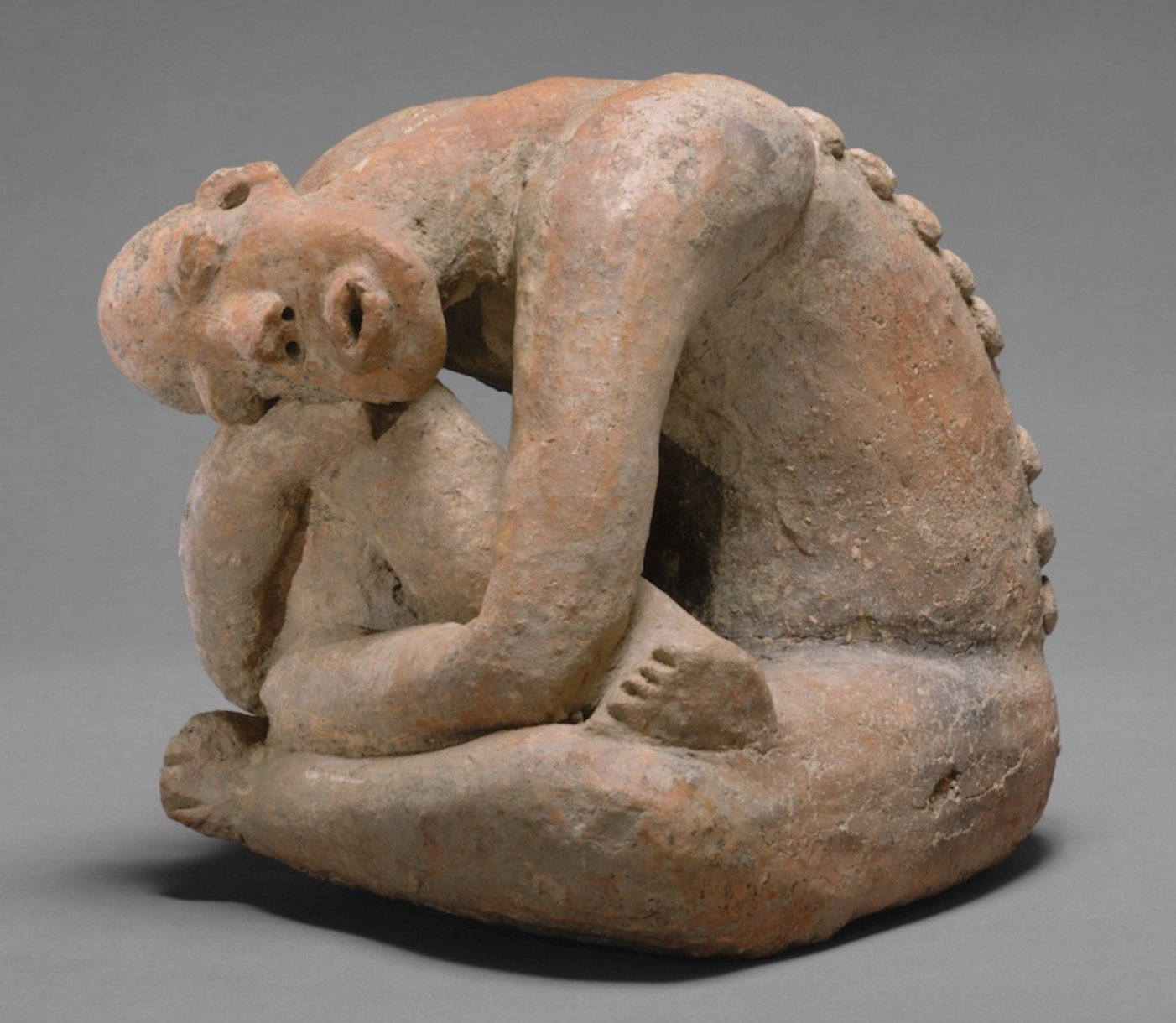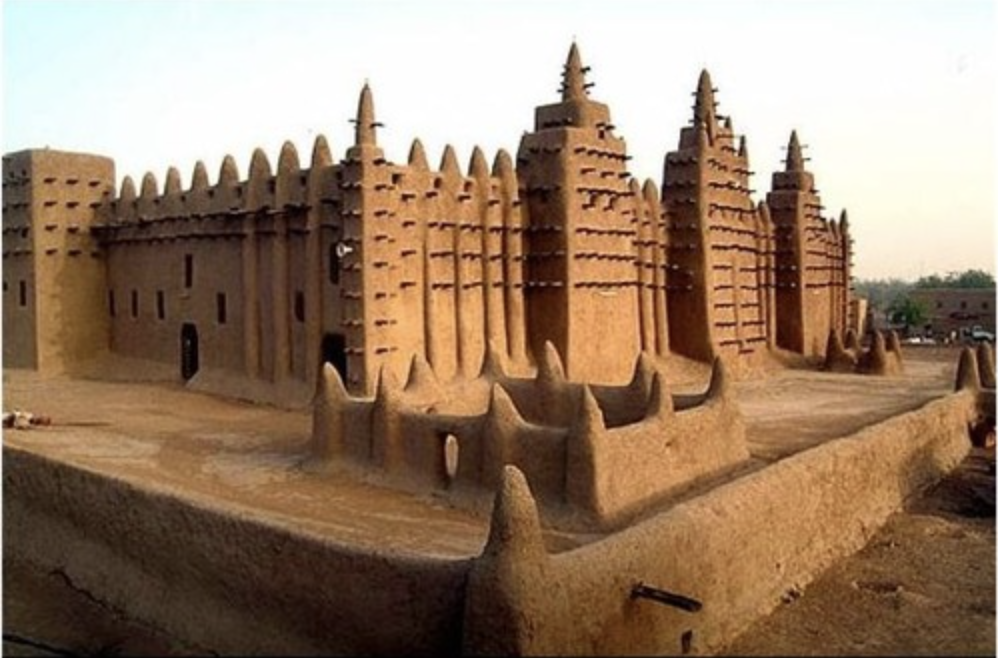4 - Inland Niger Delta, Mali
1/19
Earn XP
Name | Mastery | Learn | Test | Matching | Spaced |
|---|
No study sessions yet.
20 Terms
Inland Niger Delta, Mali (Periods/Cultures/Kingdoms)
Culture: Jenne-Jeno (350BCE - 1,400CE)
Kingdom: Kingdom of Djenne (1,200CE - 1,850CE)
Inland Niger Delta (location)
Mali
Jenne-Jeno (350BCE - 1,400CE) notes
located in modern-day Mali
archaeological society
pottery usually found b/c it doesn’t really break down, textiles do though so there isn’t much of a record of their clothing
not much is known about Jenne-Jeno (or African history in general) b/c archaeology was not prioritized during colonization, and current research is not usually well-funded or well-carried-out
Jenne-Jeno (dates)
350BCE - 1,400CE
Artwork ID: “Seated Figure”
Culture: Jenne-Jeno
Location: Inland Niger Delta, Mali
Dates: 350BCE - 1,400CE
Medium: terracotta

“Seated Figure” notes
all are the same size, unpainted, have the same face, and are in similar poses
less focus on correct anatomy to focus on expression
made to elicit an emotional response
drowsy, sad, calm, tired
some structural concerns of clay to consider composition-wise
lots of texture/markings on the back
not sure why marks are there or what they are due to lack of context
could be scars, painting, tattoos, or disease
all found sealed inside the walls of buildings
Could be for protection?
Must’ve had some purpose b/c that’s a lot of effort to put into something that wouldn’t be seen
Kingdom of Djenne (dates)
1,200CE - 1,850CE
Artwork ID: “Great Friday Mosque”
Artist: King Koi Konboro
Kingdom: Kingdom of Djenne
Location: Inland River Delta, Mali
Dates: (original) c. 1,200CE - (french reconstruction) 1,907CE
Medium: mud and wood

“Great Friday Mosque” notes
stands out easily via scale, architectural style difference, it’s placement in the center of the city (all roads lead to the mosque), and it’s elevation on a platform
hypostyle hall, but no clerestory
yearly festival to rennovate
unifies men, women, and children
belongs to the community, so the community takes care of it
UNESCO refurbished mosque, which threw off the traditional festival and angered residents
mosque
Islamic house of worship
finial
an ornament at the top of a spire or gable
mud peaks on Great Friday Mosque decorated w/ ostrich eggs
hypostyle hall
geometric sections that can be repeated to form a structure
in this case, pillars in a square unit that is repeated to form a hall
Timbuktu
Mali's capital under Mansa Musa
Islamic center of commerce and education
qibla wall
most ornate wall of a mosque
- faces Mecca
toron
wooden beams that project from walls of mud-brick building as support for re-plastering
in the Great Friday Mosque
engaged column
a column attached to a wall (not freestanding)
Sudanic
architectural style
called Sudanic because the Djenne area used to be called Sudan
made with mud and torons (wooden beams projecting from wall)
mihrab
niche in the qibla wall
- quotes from the Qur'an are usually above it
mason
a craftsman who works with stone or brick
Mansa Musa
ruled Empire of Mali (1200-1300? self-governed cities that payed him fees)
completed pilgrimage to Mecca in the most ostentatious fashion possible
brings back Middle Eastern scholars and founds schools on journey back to Mali